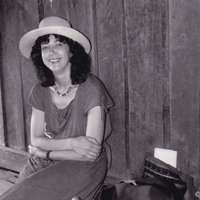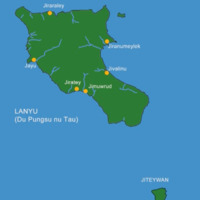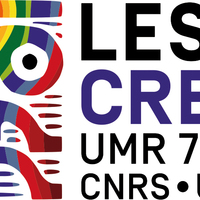Deprecated: strpos(): Passing null to parameter #1 ($haystack) of type string is deprecated in /var/www/html/themes/BBCFoundation/view/omeka/site/item/show.phtml on line 31
Deprecated: strpos(): Passing null to parameter #1 ($haystack) of type string is deprecated in /var/www/html/themes/BBCFoundation/view/omeka/site/item/show.phtml on line 45
Suite de la cérémonie de lancement de la grande pirogue du lignage Du-Village - Chants sacrés de l'intérieur du bateau des constructeurs sur le terre-plein du barreur - grande expulsion des morts du bateau - lancement du bateau dans les airs
Field recordings collected in Lan Yu Island (Taïwan), Yami population, by V. Arnaud in 1975.
- Edited Title
- Archivist's Original Title
- Original description
- Time duration
- Recording date of the original material
- Acquisition Date
- Population
- Place of the cultural origin
- Country Name
- Recording place
- Resource Language
- Comment
- Archivist Category
- Recording context
- Collector
- Name of original Collection
- Collection source citation
- Related material
- History of ownership
- Holding Institution of Original Materials
- Licensing Institution
- Accessing Institutions
- Copyright Information
- Copyright Notice
- Physical format
- Preservation State of Physical Object
- Original item number
- SEAH Identifier
-
en
Meyvazey so cinedkeran Siapen-kotan Do-Seyli - meyraod do sahad no cinedkeran - mangaoy do cinedkeran - lalaboin o cinedkeran -
-
fr
Suite de la cérémonie de lancement de la grande pirogue du lignage Du-Village - Chants sacrés de l'intérieur du bateau des constructeurs sur le terre-plein du barreur - grande expulsion des morts du bateau - lancement du bateau dans les airs
-
en
Continuation of the launching ceremony of the large dugout canoe of the Du-Village lineage - Sacred songs from inside the boat of the builders on the helmsman's platform - great expulsion of the dead from the boat - launching of the boat into the air
-
en
Field recordings collected in Lan Yu Island (Taïwan), Yami population, by V. Arnaud in 1975.
-
en
01:04:24
-
en
1975-08-24
-
en
2012
-
en
Yami
-
en
Jiraraley village; Lan Yu Island
-
en
Yami (Tao)
-
en
InCopyright and/or related rights. URI: https://rightsstatements.org/page/InC/1.0/
For more information on the rights, please see the corpus record : https://archives.crem-cnrs.fr/archives/corpus/CNRSMH_Arnaud_001/
-
fr
Sur le terre-plein du barreur, l'embarcation présente d'un côté la "poupe orientée vers la terre et la forêt" (maoji do kahasan do teyrala) et de l'autre la "proue orientée vers la mer" (morong do teylaod) qui se font face tels deux combattants. De même, l'"homme de la poupe", le responsable du lignage, est placé à l'arrière tandis que l'"homme de la proue", représenté par un autre ancien, est placé à l'avant. Ils se font face, le poignard brandi, faisant des gestes d'exorcisme et proférant des insultes, l'un envers l'autre et contre tous les "morts" de l'intérieur du bateau. Le premier à chanter est le plus âgé à l'arrière auquel celui de l'avant donne la réplique. Après le "chant d'exorcisme", les "constructeurs" peuvent monter à bord pour une "célébration par des chants rituels de l'intérieur du bateau" (meyraod do sahad no cinedkeran), chacun à son tour et selon leur position hiérarchique à l'intérieur du bateau. "L'homme de la proue" commence auquel répondra "celui qui attrape les poissons" (do pangapan so among) puis les suivants.
Ensuite, vient la grande "expulsion des morts du bateau" (mangaoy do cinedkeran) par tous les hommes du village surgissant des buissons environnants en file indienne et par groupes d'âge. Tout d'abord les "petits garçons" (kanakan) suivis par les "jeunes hommes" (maova tao), puis les hommes d'âge mûr ou "hommes dressés" (amlida tao), les vétérans "dont la peau se sillonne" (minminyadan so kolit) et enfin "les anciens" (rarakeh) qui viennent entourer le bateau, les yeux exorbités, tapant des pieds, le poing tournant vivement à hauteur de la poitrine, trépignant de colère, soufflant et criant comme pour "se battre contre le bateau". Le but est de "montrer sa force". Les Yami supposent que les esprits récents du lignage sont venus nombreux, curieux de "voir" (bien qu'ils soient décrits comme dépourvus d'yeux) le bateau terminé et d'assister à la cérémonie de lancement. En l'absence de rites d'expulsion, les hommes n'auraient pas la force de soulever leur bateau et de le "lancer dans les airs" (lalaboin o cinedkeran) comme ils ont coutume de le faire. Lorsque les (anito) sont chassés, le bateau devient plus léger. Alors, comme avec un beau jouet, on peut s'amuser et c'est à qui le lancera le plus haut, à qui atteindra la "partie médiane du ciel" ...
-
en
On the helmsman's platform, the boat has on one side the "stern oriented towards the land and the forest" (maoji do kahasan do teyrala) and on the other side the "bow oriented towards the sea" (morong do teylaod) who face each other like two fighters. Likewise, the "man from the stern", the person responsible for the lineage, is placed at the rear while the "man from the bow", represented by another elder, is placed at the front. They face each other, daggers brandished, making exorcism gestures and uttering insults, towards each other and against all the "dead" inside the boat. The first to sing is the oldest at the back to whom the one at the front gives the reply. After the "exorcism song", the "builders" can come on board for a "celebration with ritual songs from inside the boat" (meyraod do sahad no cinedkeran), each in turn and according to their hierarchical position at inside the boat. “The man on the bow” begins to which will be answered “the one who catches the fish” (do pangapan so among) then the following. Then comes the great "expulsion of the dead from the boat" (mangaoy do cinedkeran) by all the men of the village emerging from the surrounding bushes in single file and by age groups. First the "little boys" (kanakan) followed by the "young men" (maova tao), then the middle-aged men or "trained men" (amlida tao), the veterans "whose skin furrows" (minminyadan so kolit) and finally "the elders" (rarakeh) who come to surround the boat, their eyes bulging, stamping their feet, their fists turning quickly at chest height, stamping with anger, blowing and shouting as if to "fight against the boat. The goal is to “show your strength”. The Yami assume that recent spirits of the lineage came in numbers, curious to "see" (although they are described as having no eyes) the completed boat and to witness the launching ceremony. In the absence of expulsion rites, men would not have the strength to lift their boat and "throw it into the air" (lalaboin o cinedkeran) as they are accustomed to doing. When the (anito) are chased away, the boat becomes lighter. So, like with a beautiful toy, we can have fun and it's who can throw it the highest, who will reach the "middle part of the sky"...
-
en
Music and spoken voice
-
en
Field recording
-
en
Taiwan (Lan Yu), population Yami (actuels Tao), V. Arnaud expedition, 1975.
-
en
Recordings digitized by R. Saint Estève, archived at CREM (CNRS) between 2012 and 2020, indexation and annotation by V. Arnaud.
-
In Copyright. Non-Commercial Use Permitted
-
For any use, please contact the CREM-LESC (CNRS, Nanterre University, France): crem.lesc[at]cnrs.fr ; See information at https://archives.crem-cnrs.fr
-
en
Magnetic tape
-
en
UHER magnétophone
-
en
CNRSMH_I_2013_012_014_001
-
en
SEAH_CNRSMH_I_2013_012_014_001
- Media





